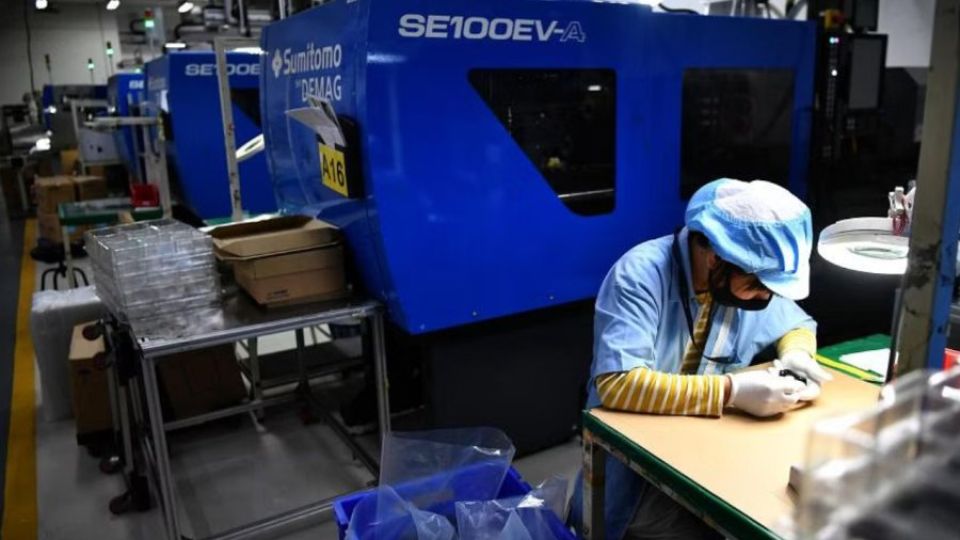October 5, 2023
SINGAPORE – Factory activity in Singapore eked out growth for the first time in six months, in a signal that the slump in manufacturing may have bottomed out, even as the electronics industry continued to show a contraction.
The purchasing managers’ index (PMI), a barometer of the manufacturing sector, nudged higher to 50.1 points in September, up from 49.9 points in the previous month.
Readings below 50 indicate contraction, whereas those above 50 points denote growth. This expansion was helped by the broad-based improvement, albeit a marginal one, across a raft of key indicators, such as new exports, imports, output, inventory and order backlog.
In contrast, supplier deliveries slipped lower and input prices continued to worsen, according to the latest data released by the Singapore Institute of Purchasing and Materials Management on Tuesday.
“A faster decline in supplier deliveries may be attributable to a variety of factors, including supply-chain issues, geopolitics, or maybe even a pickup in demand such that suppliers are finding it difficult to meet orders,” OCBC Bank’s chief economist Selena Ling said, adding that it was “hard to tell without first checking with the manufacturers”.
Meanwhile, the rise in input prices “may likely be due to the recent surge in global crude oil prices on the back of announced production cuts by Russia and Saudi Arabia”, noted UOB associate economist Jester Koh.
Commenting on the overall data, DBS Group Research economist Chua Han Teng said Singapore’s manufacturing slump has likely bottomed out. “Despite a still uncertain global economic environment, we are seeing signs of a modest improvement in demand, including a rising order backlog, inventory drawdowns and a contraction in finished goods,” he said.
Similarly, Ms Ling felt that the latest data was “encouraging, given the broadening of growth drivers for the sector, particularly the employment gauge’s return to expansion after seven months of contraction”.
In contrast, Mr Koh was less optimistic. He said: “Headwinds in the manufacturing sector remain, given the weak external demand that could persist for the rest of 2023, exacerbated by tight financial conditions stemming from an elevated interest rate environment.”
For the electronics segment, the latest PMI data pointed to a further shrinkage, despite improving by 0.3 point to 49.8 from a month earlier.
Mr Chua said: “The slower pace of contraction suggests that the industry is not yet on firm footing.”
He noted that besides the high interest rates in advanced economies, China’s post-pandemic recovery is bumpy, and lingering geopolitical tensions could still disrupt supply chains.
Agreeing, UOB’s Mr Koh said “the sub-50 reading for the electronics PMI reaffirms the assessment that the segment remains in a down cycle and it may be premature to call it a trough in electronics-sector activity”.
Ms Ling was slightly more upbeat, saying that “although most of the underlying indicators for electronics remained shy of the 50-point mark, what’s notable is the gradually stabilising global demand conditions”. She added that there is a slow yet steady pickup in the order backlog for both the manufacturing sector and the electronics segment, with both sets of data having posted four straight months of growth.
She said that it was heartening as an improvement in the order backlog generally denotes brightening prospects for the sector.
Looking ahead to the rest of this year, Mr Chua noted that the improvement “is in line with our expectations for a gradual and fragile manufacturing recovery in the second half of this year”.
Both Mr Koh and Ms Ling appeared more circumspect about a possible recovery this year.
Mr Koh said he was “hesitant to call it a broad-based manufacturing recovery solely on the latest expansionary statistic in the soft data and would require further improvements and several above-50 PMI readings for greater certainty on the progress of a manufacturing recovery”.
Ms Ling said: “I doubt there is going to be a meaningful change to the full-year gross domestic product growth forecast from this one data point, with most of 2023 already water under the bridge.”
“Nevertheless, the improvement in the order backlog is definitely positive and suggests that market forces between demand and supply are slowly equalising, potentially setting the stage for growth next year,” she added.

